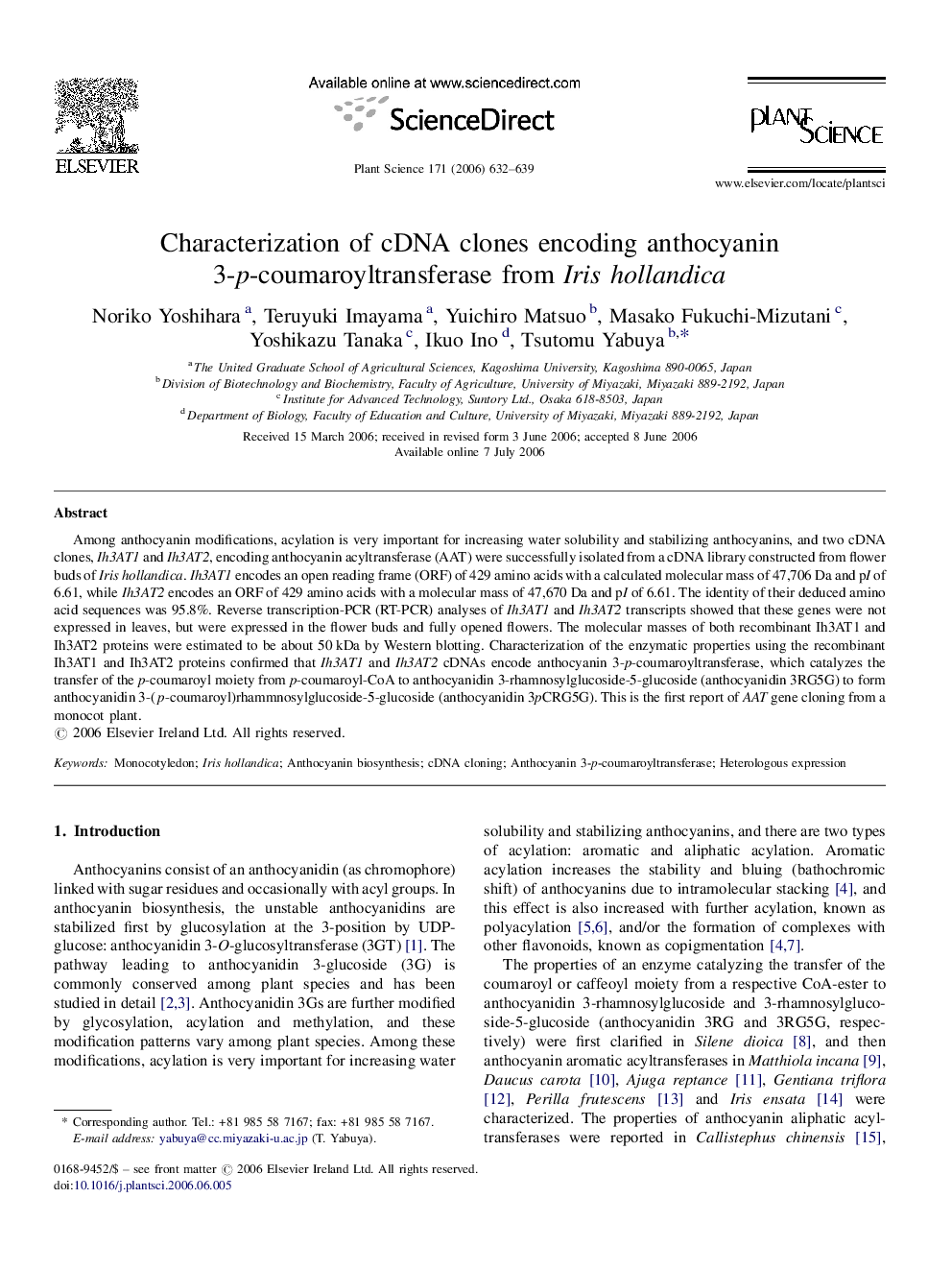| Article ID | Journal | Published Year | Pages | File Type |
|---|---|---|---|---|
| 2018460 | Plant Science | 2006 | 8 Pages |
Among anthocyanin modifications, acylation is very important for increasing water solubility and stabilizing anthocyanins, and two cDNA clones, Ih3AT1 and Ih3AT2, encoding anthocyanin acyltransferase (AAT) were successfully isolated from a cDNA library constructed from flower buds of Iris hollandica. Ih3AT1 encodes an open reading frame (ORF) of 429 amino acids with a calculated molecular mass of 47,706 Da and pI of 6.61, while Ih3AT2 encodes an ORF of 429 amino acids with a molecular mass of 47,670 Da and pI of 6.61. The identity of their deduced amino acid sequences was 95.8%. Reverse transcription-PCR (RT-PCR) analyses of Ih3AT1 and Ih3AT2 transcripts showed that these genes were not expressed in leaves, but were expressed in the flower buds and fully opened flowers. The molecular masses of both recombinant Ih3AT1 and Ih3AT2 proteins were estimated to be about 50 kDa by Western blotting. Characterization of the enzymatic properties using the recombinant Ih3AT1 and Ih3AT2 proteins confirmed that Ih3AT1 and Ih3AT2 cDNAs encode anthocyanin 3-p-coumaroyltransferase, which catalyzes the transfer of the p-coumaroyl moiety from p-coumaroyl-CoA to anthocyanidin 3-rhamnosylglucoside-5-glucoside (anthocyanidin 3RG5G) to form anthocyanidin 3-(p-coumaroyl)rhammnosylglucoside-5-glucoside (anthocyanidin 3pCRG5G). This is the first report of AAT gene cloning from a monocot plant.
